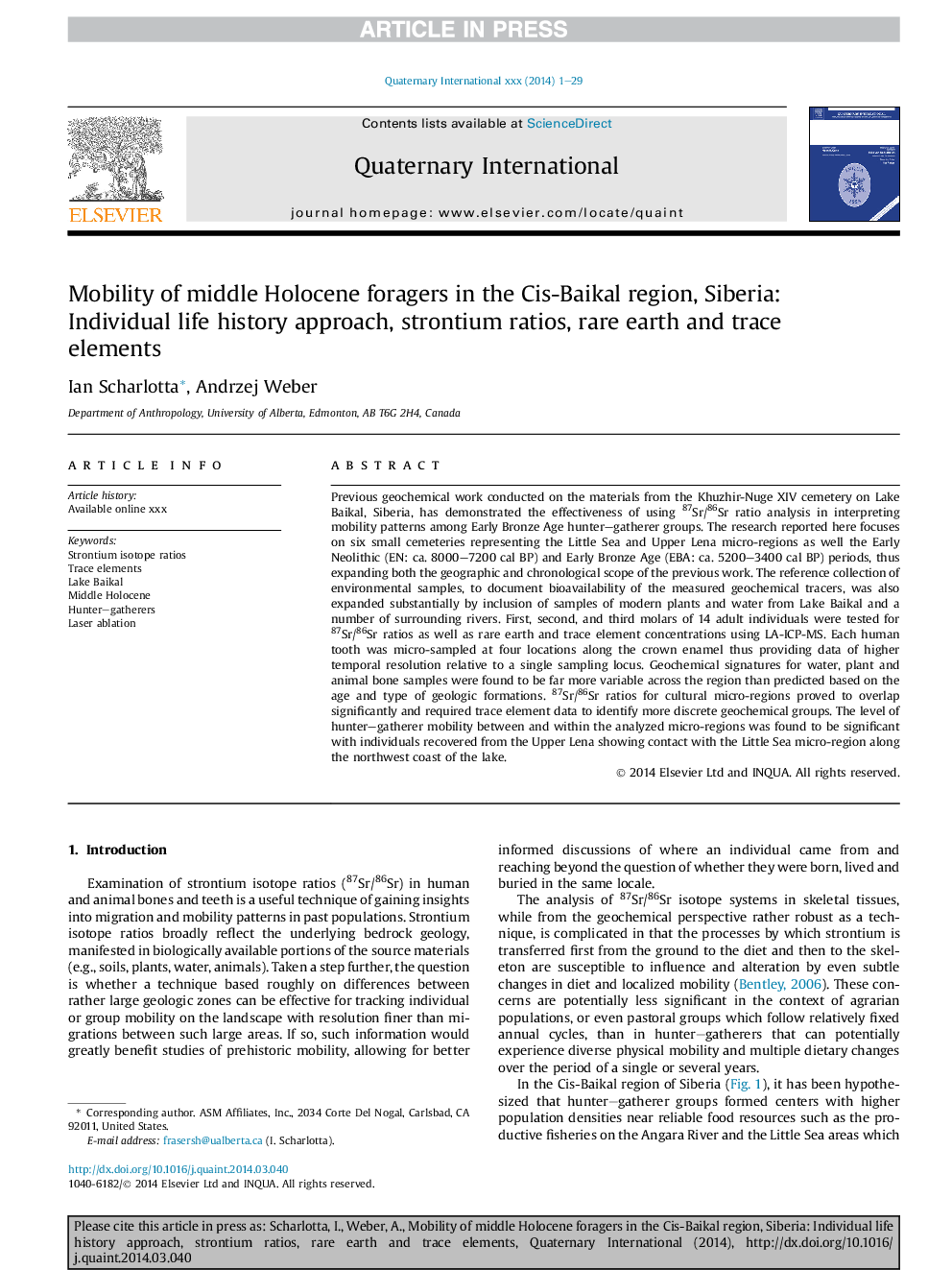| Article ID | Journal | Published Year | Pages | File Type |
|---|---|---|---|---|
| 7452165 | Quaternary International | 2014 | 29 Pages |
Abstract
Previous geochemical work conducted on the materials from the Khuzhir-Nuge XIV cemetery on Lake Baikal, Siberia, has demonstrated the effectiveness of using 87Sr/86Sr ratio analysis in interpreting mobility patterns among Early Bronze Age hunter-gatherer groups. The research reported here focuses on six small cemeteries representing the Little Sea and Upper Lena micro-regions as well the Early Neolithic (EN: ca. 8000-7200Â cal BP) and Early Bronze Age (EBA: ca. 5200-3400Â cal BP) periods, thus expanding both the geographic and chronological scope of the previous work. The reference collection of environmental samples, to document bioavailability of the measured geochemical tracers, was also expanded substantially by inclusion of samples of modern plants and water from Lake Baikal and a number of surrounding rivers. First, second, and third molars of 14 adult individuals were tested for 87Sr/86Sr ratios as well as rare earth and trace element concentrations using LA-ICP-MS. Each human tooth was micro-sampled at four locations along the crown enamel thus providing data of higher temporal resolution relative to a single sampling locus. Geochemical signatures for water, plant and animal bone samples were found to be far more variable across the region than predicted based on the age and type of geologic formations. 87Sr/86Sr ratios for cultural micro-regions proved to overlap significantly and required trace element data to identify more discrete geochemical groups. The level of hunter-gatherer mobility between and within the analyzed micro-regions was found to be significant with individuals recovered from the Upper Lena showing contact with the Little Sea micro-region along the northwest coast of the lake.
Keywords
Related Topics
Physical Sciences and Engineering
Earth and Planetary Sciences
Geology
Authors
Ian Scharlotta, Andrzej Weber,
